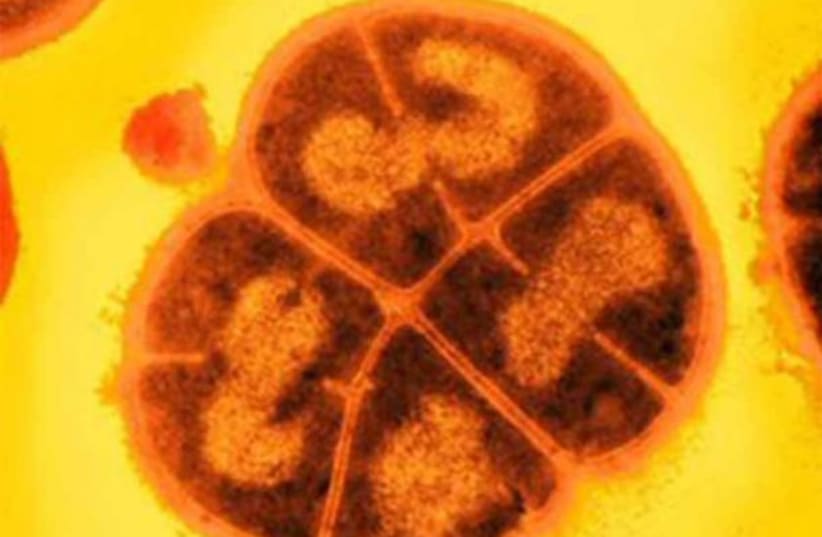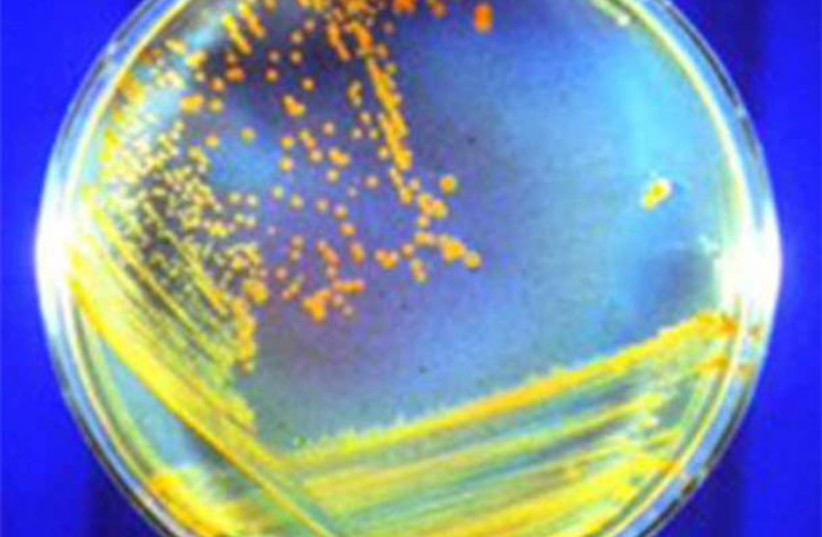The US National Aeronautics and Space Administration (NASA) plans to launch astronauts to Mars by the late 2030s or early 2040s. It won’t be easy, even if the funding and technology become available in time. The round-trip travel time would still be about 500 days given the distance between Earth and the Red Planet.
But what about the risk of humans being infected with some strange or familiar microbes that might have been surviving undisturbed since the time dinosaurs walked the Earth? It is a possibility, according to American researchers led by pathology professor Michael Daly at Uniformed Services University (USU) of the Health Sciences in Maryland, who have just published a fascinating study under the title “Effects of Desiccation and Freezing on Microbial Ionizing Radiation Survivability: Considerations for Mars Sample Return” in the peer-reviewed journal Astrobiology and described on the website Ancient Origins.
There is a type of bacteria called Deinococcus radiodurans – nicknamed “Conan the Bacterium” because it is so tough and hardy. This microbe is resistant to both extreme cold and heat, as well as acid, dehydration, vacuum conditions and massive doses of radiation.
But would it die on Mars?
The study’s authors uncovered evidence that this hardiest of all microbial life-forms could have survived on Mars if it had evolved there instead of here, even though our neighboring planet is continuously bombarded with toxic and deadly cosmic radiation.
Biologists who have studied the question suggest that microbes that evolved on Mars billions of years ago could bear a striking resemblance to those found on Earth today. So the discovery that Conan the Bacterium could have survived Mars-like conditions suggests that bacteria native to the Red Planet might have developed the capacity to do the same.
If life did evolve on Mars, it would have occurred more than two billion years ago, when the planet had an atmosphere, milder temperatures and liquid water flowing across the landscape. To survive to the present day, Martian bacteria would have had to adapt to a totally frozen planet where temperatures average minus-63 degrees Celsius in the mid-latitudes.
Even more destructive are the deadly ultraviolet light, gamma rays and solar-generated, high-energy protons that inundate the Martian surface constantly. Any flora or fauna that existed there in the far distant past would be long extinct.
But microbial life forms are extraordinarily resilient and flexible. On Earth, there are bacteria that can survive some of the harshest conditions imaginable, and if microbes evolved on Mars, they might have shared that ability as well. But could they have survived Mars’s descent into its current radioactive state? This is the question the scientists involved in the new study wanted to address.
THE TEAM of biological scientists selected several of the world’s toughest and most adaptable microbes and fungi to be subjected to conditions mimicking those that such life forms would encounter if they were transported to Mars. These “extremophiles” are able to live in Earth environments that are completely inhospitable to all other organisms, surviving exposure to extreme heat or cold, toxic chemicals and gases and other substances or conditions known to destroy living cells.
In carefully controlled laboratory conditions, all of these organisms were blasted with continuous heavy doses of ultraviolet light, gamma rays and high-energy protons to see how they could handle such exposure.
The scientists then took samples from the organisms to test for the presence of manganese antioxidants, a biochemical that forms in microbes after they have been exposed to radiation. Manganese antioxidant formation is a defense for the cells, and the more of these protective molecules a microbe can produce, the more resistant it will be to the harmful effects of intense radiation.
Despite their durability and resiliency, most of the extremophiles used in the experiment did not produce nearly enough manganese antioxidants to survive a Martian-style radioactive onslaught. But there was one that did – Conan the Bacterium. This molecule was able to absorb 28,000 times the amount of radiation that would kill a human, and that protective capacity would be enough to allow it to survive on Mars, even as it is today. The bacteria were also frozen and dried out, putting them in the suspended state they would have to enter if they were to stay alive on Mars.
Remarkably, the experiments on the bacteria showed that they could have survived on Mars for as long as 280 million years if they dug 10 meters under the surface to limit their radiation exposure to a manageable dosage. If buried just 10 centimeters under the surface, they could still survive for 1.5 million years, despite being regularly hit with massive amounts of cosmic radiation.
Buried under the surface in this way, D. radiodurans could withstand such high levels of radiation in a state of suspended animation and thus have the possibility of being reanimated if conditions were right, the researchers said.
Obviously, the scientists are not proposing that Conan the Bacterium is somehow living on Mars because it lives on Earth. But if life ever did evolve on Mars, they believe the simplest microbial life forms would almost certainly share most of the characteristics displayed by microbial life forms here, including the ability to survive in exceptionally harsh conditions, assuming evolutionary pressures required it, as they would on Mars.

